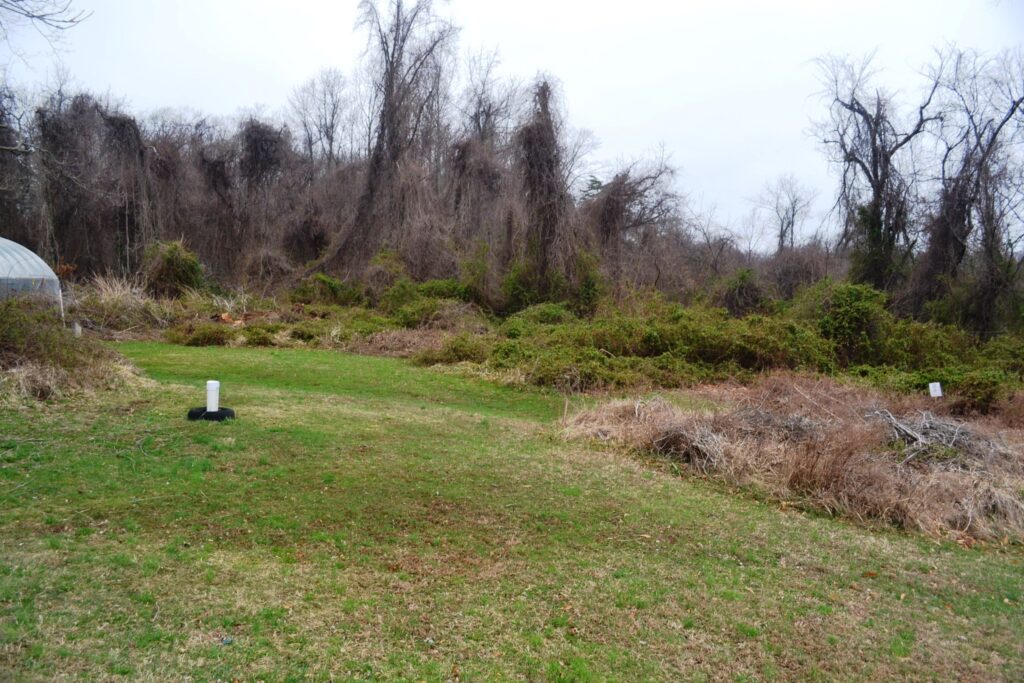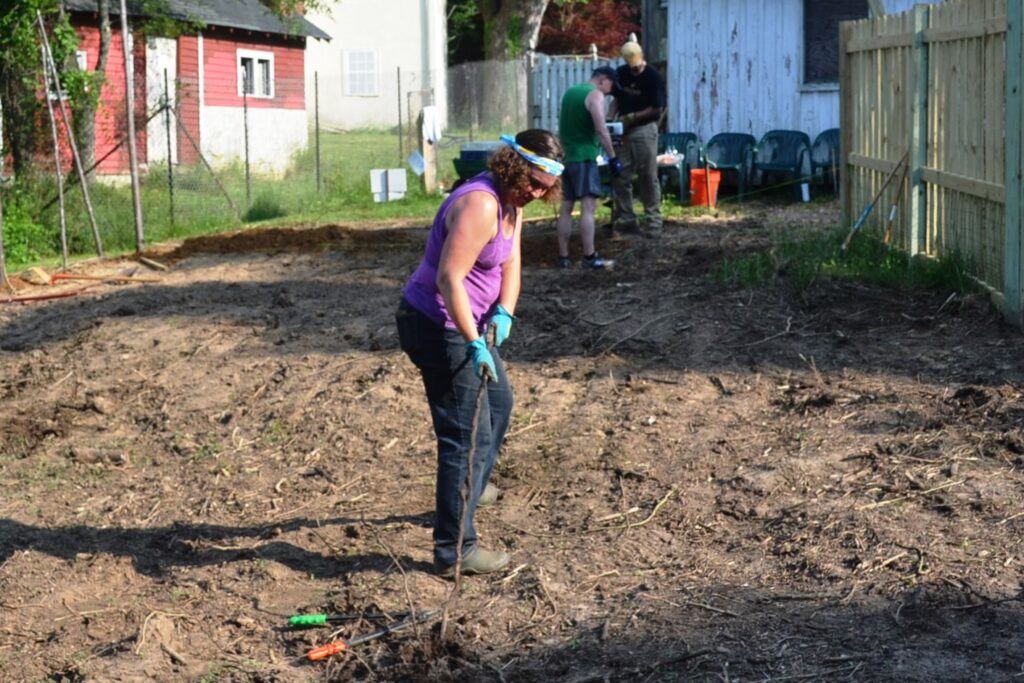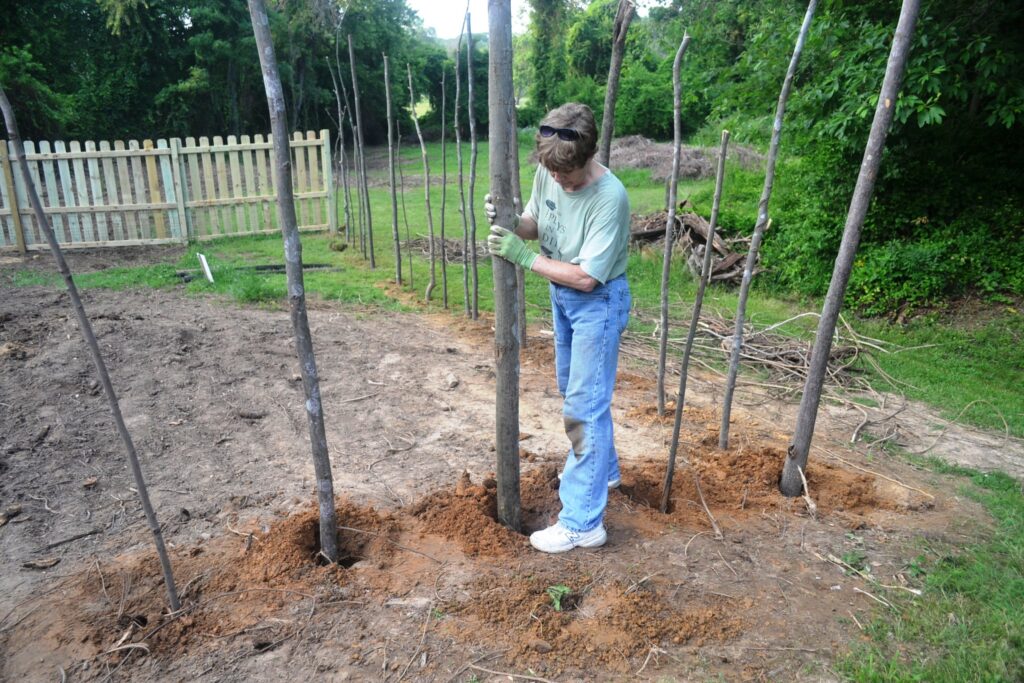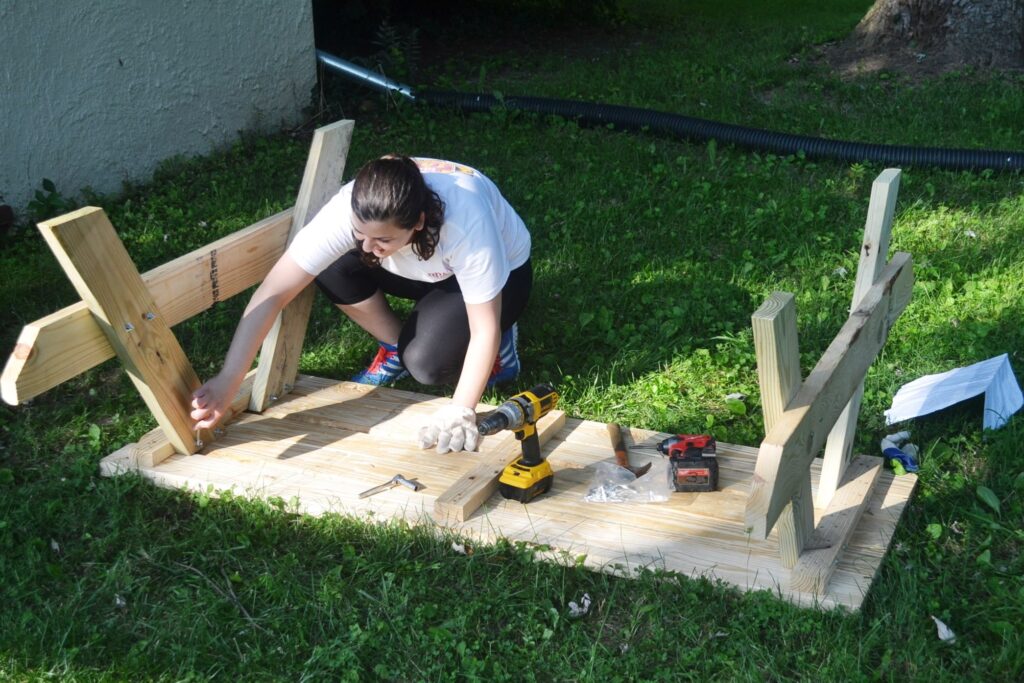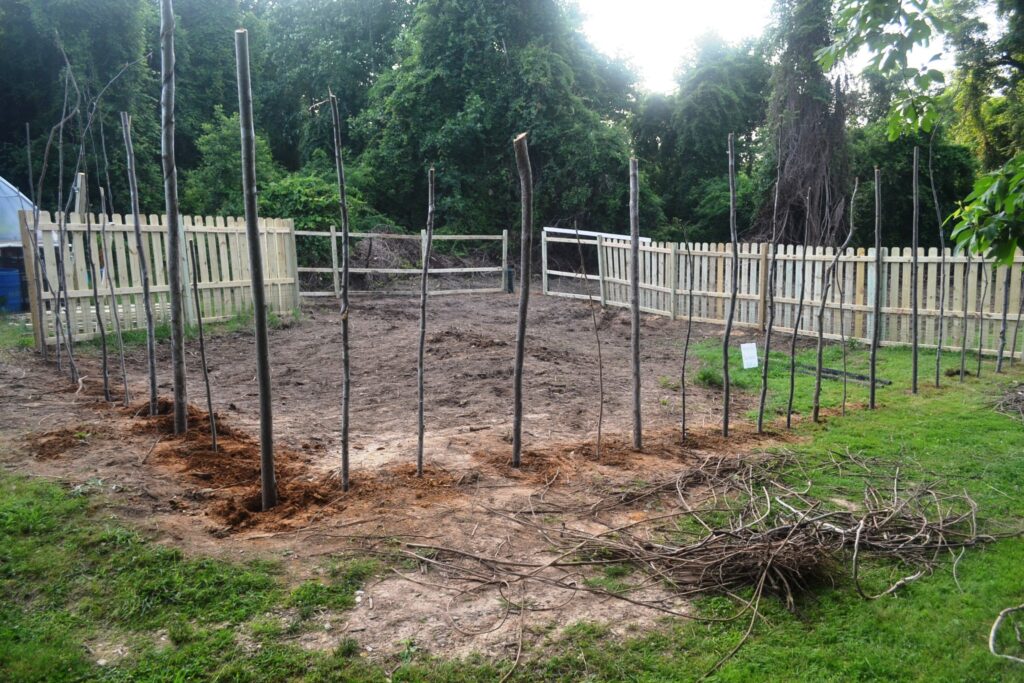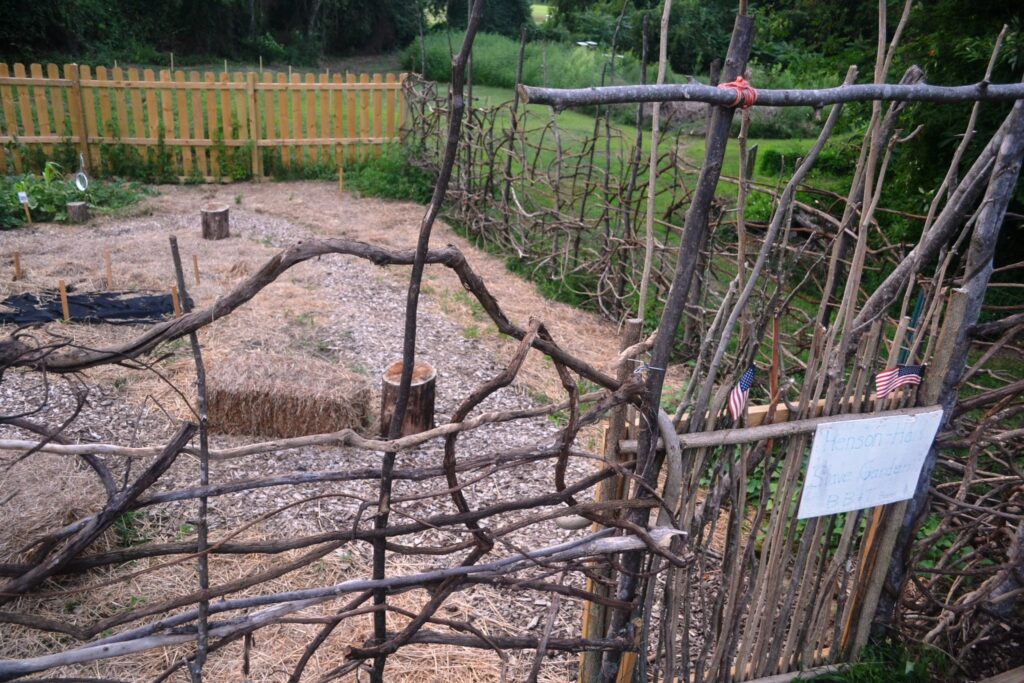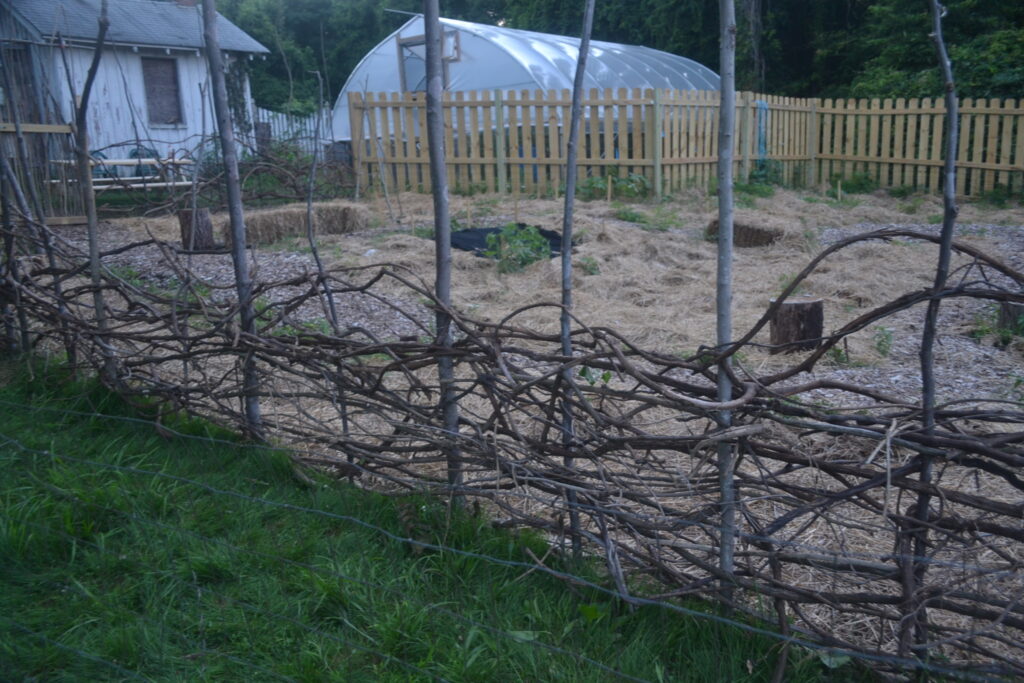The Creation of the Henson-Hall Slave Garden
Before the establishment of the Henson-Hall Slave Garden, there were concerted efforts to gain a deeper understanding of the monocropping and gardening practices that took place at Goshen Farm. Many previous owners of the farm, in conjunction with neighboring landowners, engaged in the cultivation of tobacco. This crop thrived in the favorable climate and soil of Anne Arundel County, Maryland. It significantly impacted the land’s appearance and the country’s economy.
In the spring of 2012, our GFPS’ Ground Chair, Roy Benner, planted a small tobacco field at the farm. The purpose was to allow visitors to witness and experience firsthand the crop that had historically shaped the land and influenced the nation’s economy. Subsequently, Member Kara Maddox planted a field of cotton the following year. Although cotton was not traditionally grown in Maryland, it was historically significant for our country. This addition aimed to facilitate reflections on the property’s history and the broader area for students and visitors.
The Seed Was Planted
These initial endeavors sparked discussions among GFPS’ Board of Directors Members, Terry Brandon, Roy Benner, and Becky Benner. They recognized that these two crops represented more than just agricultural products; they held profound historical value. It wasn’t until November 2014 that a plan took shape, thanks to a local bank branch manager seeking a volunteer project for their company.
The bank generously provided funds to support the project alongside their volunteer efforts. This exchange became the seed that initiated this transformative project. With the assistance of dedicated local volunteers, the design and construction of a garden began at Goshen Farm. After thoughtful deliberation, it was collectively decided to name this Garden the Henson-Hall Slave Garden, purposefully honoring the memory of the twelve enslaved individuals on this farm. This Garden serves as an educational resource, fostering community engagement and preserving an integral part of American history.
18th-Century Garden History
Occasionally, enslavers in this county’s early years allowed the enslaved people a small parcel of land to plant small gardens. This was to supplement the usually meager food provisions allocated to them. Some enslavers intentionally delegated a small plot of ground for this purpose near the enslaved quarters. Enslaved individuals would prepare their garden plots after sundown and on Sundays when most had a lighter work schedule.
It would be relatively easy to save the seeds for annuals, just as they did year to year. However, the challenges of planting and harvesting herbs and vegetables were the same for everyone in the area. Of course, the enslaved knew these challenges well since they planted and maintained the gardens of their enslavers. The wealthy landowner would have the enslaved build a wall or a lavish fence around his plantation’s kitchen garden to keep deer and other interlopers at bay. Therefore, the enslaved individuals would need to find a way to do the same for their gardens. Often, the enslaved would construct fences using tree branches and vines. These woven fences came to be known as wattle fences.
But wait, why the name? The Henson-Hall Slave Garden was named to pay tribute to the twelve enslaved people who lived and labored on this farm in the early 1800s. Unfortunately, only two of these last names are known today. Found through the search of several court records, GFPS knows they were Jack Henson and Nace Hall, both born 1810-11.
- The area where the garden would go. Before construction.
- Finished Henson-Hall Slave Garden
Building of Henson-Hall Slave Garden
Roy and Terry designed a 40-foot-by-40-foot garden just north of the existing Goshen Farm Sharing Garden and recently constructed a High Tunnel. The area chosen had not been farmed for at least 50 years and was covered by a jungle of invasive trees and vines. With the Midshipmen Action Group’s (MAG) assistance, nearly fifty volunteers began clearing this area as part of a GFPS’ Work Day At The Farm. On April 11th, 2015, the Garden started to take shape.
The Garden topography was left as it existed, and the Garden was planned to encompass the rolling slopes. The design included a 6-foot wooden picket fence on both the back (west) side and the north side, and a wattle fence was planned for on the more visual south and east sides of the Garden. The Garden materials include wood, metal rabbit fencing, hardware, and two six-foot wooden picnic tables.
On June 3rd and 4th, the first several sections of the south-facing picket fence were installed, and we were off to a good start. Another Work Day at the Farm was held on June 11th. On this date, several GFPS members and bank volunteers assisted in the post-hole digging, and the construction of the wattle fence began. Some sixteen volunteers worked through some of the summer’s hottest and highest humidity days to bring this Garden to fruition from an early vague idea.
Design & Decisions of Garden Build
Kudos to Terry Brandon for conceiving the slave garden concept and Becky Benner for researching the types of plants to include. It was during the early fence construction time that several large rocks were encountered. The consensus is that these rocks were part of the corner foundation of one of the earlier 20th-century farm buildings we knew existed in this area. C. Jane Cox of the County Cultural Resources Division was consulted and suggested that this area not be planted or disturbed until the County Planning and Zoning undertook a better field survey.
Therefore, when visiting the Garden, one may notice a small area covered with geotextile fabric protecting the foundation remains. Vines were gathered and evaluated as to their use in the wattle fence. Even though there were thousands of vines available, it was found that grape vines were the most suitable, pliable, and strongest of the vine choices for the fence. Hundreds of grape vines were collected, and the task of weaving began. The wattle fence began to take shape and gain in height. One foot, then two feet, then three feet, and we ran out of readily available vines. Searching and collecting fence material (grape vines) was ongoing.
On June 21st, six volunteers spent their evening, after regular work hours, working towards completing the Henson-Hall Slave Garden. At this point, the picket fence was complete, and most of the effort was directed at raising the wattle fence toward its 5- to 6-foot height. A wooden picket gate was constructed and installed in the northwest corner of the picket fence sections, and a modified wattle branch gate was constructed and installed in the southeast corner or main entrance to the Henson-Hall Slave Garden.
Progress Photos
- The entire MAG group who helped clear the area.
- Thanks to the use of a power auger provided we made quick work of digging the post holes.
- Christina Thomas (left) and GFPS member, Kara Maddox, install pickets.
- Tyrone Dorsey and Gretchen Stuecker installing pickets.
- Lisa Lilly “grubs” the garden to prep for the rototiller.
- Tyrone Dorsey grubs another section.
- Membership Chair, Becky Benner, installing sales.
- Michelle and Pam Waybright weaving those wattle roots.
- Jaime Saman putting together the two picnic tables.
Growing The Garden
While the physical Garden was under construction, Goshen Farm Members Brian and Kara Maddox researched and obtained seeds. They started growing many of the plants in preparation. This Garden consists of traditional vegetables, grains, and medicinal herbs brought to this country by enslaved persons during that time. These include millet, cymlings (patty-pan squash), flax, and sorghum. Traditional African crops such as okra and black-eyed peas were directly planted by seed into the Garden. The Maddox also planted yams (sweet potatoes), lettuce, beets, cucumbers, turnips, watermelons, and Anne Arundel County melons.
Member Tracy Smith currently manages the Henson-Hall Slave Garden. Smith purchases, plants seeds, and tends the Garden every year from planting to
harvest. Alongside Bob Nestruck and Diane Kinsley, they produce various goods from the peppers in the Garden. For example, hot sauces, pepper jellies, and powdered pepper seasoning. In addition, they make dry gourds for hobbyists and pickle okra. We sell many of these goods at Goshen Farm events, with proceeds going to Goshen Farm’s preservation efforts.
Visit & See For Yourself
The Henson-Hall Slave Garden offers educational opportunities for local students and provides food products to local organizations like My Brothers Pantry and the Salvation Army Food Bank. To explore the Henson-Hall Slave Garden, enter the wattle garden gate (next to the Servant’s Quarters). Walk the meandering, woodchip-covered path circling the Garden. Or sit on the picnic tables adjacent to the entrance. Most plants have labels with a small wooden stake.
- In early April 2015, the MAGs cleared the area that was to become the Henson-Hall Slave Garden.
- Sales are the poles that support the woven waddle for fencing. At the end of the day, all the sales were installed.
- The garden entrance gate designed and built by Roy Benner, Grounds Chair.
- The east side wattle fence goes up.
- Wattle fencing looking out from inside the garden.
- Finished Henson-Hall Slave Garden
